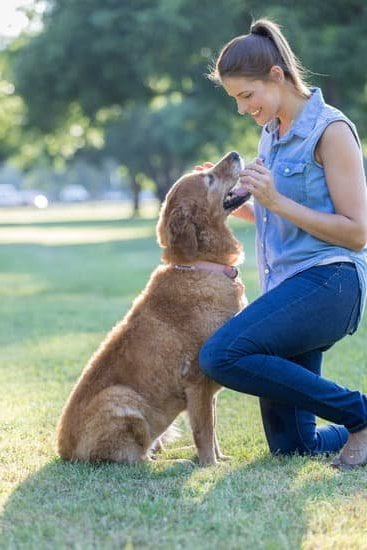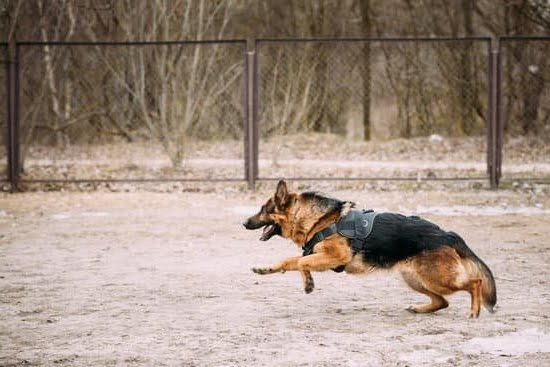Training A Dog To Walk On Leash Without Pulling
Training your dog to walk on leash without pulling is a process that takes time and patience, but is well worth the effort. The first step is to make sure your dog is properly fitted with a leash and collar that will not choke him. The leash should be long enough so that your dog can walk comfortably beside you, but not so long that he can wander off.
The next step is to get your dog used to wearing the leash. Put the leash on your dog and let him wander around the house. Don’t try to take him for a walk yet; just let him get used to the feel of the leash. Once he is comfortable with the leash, start taking him for short walks around the house. As he gets better at walking on leash, gradually increase the distance of the walks.
The final step is to teach your dog to walk without pulling. When your dog starts to pull on the leash, stop walking and wait for him to calm down. Once he is calm, start walking again. If he starts to pull again, stop and wait for him to calm down. Keep doing this until your dog learns that he can only walk on leash if he walks calmly beside you.
How To Leash Train A Pulling Dog
Pulling on the leash is a common issue that dog owners face. It can be frustrating and embarrassing when your dog pulls you down the street. Luckily, there are ways to leash train your dog and stop the pulling.
The first step is to understand why your dog is pulling. Dogs often pull because they want to get to something they see or smell. They may also pull because they are excited or trying to get away from something they don’t like.
Once you understand why your dog is pulling, you can start to leash train them. The most important part of this process is to be consistent. You need to be patient and consistent with your dog, and always reward them when they do something correctly.
There are a number of different methods you can use to leash train your dog. One popular method is the “heel” command. With this method, you should start by walking your dog in a straight line. When your dog starts to pull, stop walking and wait for them to come back to you. Once they are by your side, give them a treat and start walking again.
Another popular method is the “capture” method. This method involves rewarding your dog for good behavior. When your dog isn’t pulling, give them a treat. When they start to pull, stop walking and wait for them to come back to you. Once they are by your side, give them a treat and start walking again.
Leash training can be a frustrating process, but it’s important to be patient and consistent. With a little time and patience, you can train your dog to walk by your side without pulling on the leash.
How To Train A Dog To Not Need A Leash
It’s no secret that many dog owners find it necessary to use a leash when walking their pet. After all, dogs have a natural tendency to wander and explore their surroundings. However, with a little training, your dog can be taught to walk by your side without the need for a leash.
The first step is to teach your dog to heel. Heel means that your dog walks by your side and does not pull ahead or lag behind. Start by having your dog sit by your side. Once he is sitting, give him a treat and praise him. Then, take a few steps forward and have your dog sit again. Repeat this process until your dog is following you without hesitation.
Once your dog is heeling properly, you can start working on having him walk without a leash. Begin by having your dog heel by your side in a quiet, low-traffic area. Once he is comfortable with this, increase the distance and the amount of noise and activity in the area. If your dog starts to pull ahead or lag behind, have him sit and start over.
It may take some time and patience, but with consistent training, your dog can be taught to walk by your side without the need for a leash.
Leash And Collar Dog Training Riverwoods
IL
Leash and collar dog training is one of the most important things you can do for your dog. It helps keep them safe, makes walks more enjoyable, and can help with basic obedience commands.
There are a few things you’ll want to keep in mind when training your dog with a leash and collar. First, always start with a loose leash. This will help your dog feel more comfortable and relaxed. Once your dog is comfortable with the leash, you can start to work on basic obedience commands like sit, stay, come, and down.
If your dog pulls on the leash, don’t jerk them back. This can be very scary for your dog and can actually cause them to pull harder. Instead, try gently pulling them back towards you and give them a verbal cue, like “no” or “stop.” If your dog continues to pull, you can try using a training collar. This will help you keep your dog under control without scaring them.
Training your dog with a leash and collar can be a lot of fun and can help keep your dog safe and well-behaved. Be sure to start with a loose leash and go slowly to ensure your dog feels comfortable. And always be patient and positive, no matter how frustrating it can be.
Can You Leash Train An Older Dog
Many people think that it is impossible to leash train an older dog. They assume that the dog is too set in its ways and will not be able to learn how to walk politely on a leash. However, with patience and persistence, it is possible to leash train an older dog.
If you have an older dog that you would like to leash train, the first step is to start slow. Don’t expect your dog to be able to walk perfectly on a leash overnight. Instead, take your time and gradually introduce him to the leash.
Begin by putting the leash on your dog and letting him wander around the house. This will help him get used to the feel of the leash. Once he is comfortable with the leash, start taking him on short walks around the block.
If your dog starts to pull on the leash, don’t yank on the leash or pull him back. This will only make him more resistant to walking on the leash. Instead, try to gently guide him back to the correct position.
If your dog is resistant to walking on the leash, don’t get discouraged. Keep practicing and be patient. With time and patience, your dog will learn how to walk politely on a leash.

Welcome to the blog! I am a professional dog trainer and have been working with dogs for many years. In this blog, I will be discussing various topics related to dog training, including tips, tricks, and advice. I hope you find this information helpful and informative. Thanks for reading!





